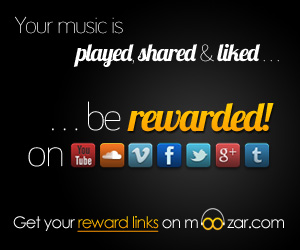By Carolyn Heneghan
Viral videos have thoroughly permeated contemporary culture, from chats at the water cooler and TV mentions to rampant social media shares. And while many of these videos feature adorable cats, dramatic prairie dogs, or Charlie the Unicorn, many others feature musicians of all stripes. Whether it’s an established artist’s latest music video or a new band’s first shot at internet fame, the potential for a video going viral is a new goal in the minds of the music industry.
Take the Scooter Braun factory for example: Psy, Carly Rae Jepsen, Justin Bieber. Granted, these may be extreme examples of viral hits, but they are indicative of the driving force behind up-and-coming musicians’ DIY media pursuits.
For some, the virality of their latest music video is a more front-and-center goal than landing a record deal. In an age where countless musically-inclined hopefuls have the accessibility of the internet at their disposal, musicians are having to come up with new, tech-savvy ways to get noticed.
“There are TONS of bands out there, all with practically the same resources at their disposal,” says David Shirley of the New Orleans trio of brothers, Cardinal Sons. “It makes it more difficult to be heard in the crowd, but it gives bands the ability to be creative with what they have and make an impact that way. It is very exciting. “
Of course, not all musicians have embraced this industry trend, and many would agree that they simply don’t need to. Plenty of artists are successful without viral videos. Others have had a video go viral, only to enjoy a mere 15 seconds of fame amidst viewers’ exponentially short attention spans.
Hannah Krieger-Benson, of New Orleans-based ska band, The Local Skank, says, “We are definitely not an especially video-heavy band, although we have some of both music videos and live footage. We’ve never gone out of our way to create… videos, video has just been part of our stream of creativity. But overall I’d say we’re way more focused on making music than on documenting it visually.”
“I think that all depends on the level of the band,” says Shirley. “For a band that already has a dedicated fan base, it’s not as important. I feel like a new band needs videos, music or promo, to captivate new listeners and keep them interested for long enough to “like” their page or convince them to go out to their show.”
Social media promotes this idea of viral videos, as it is the most common engine for viral spreads of media and information in general. It’s also likely to be the most common way for musicians to directly reach their fans today. All of the musicians interviewed for this article agreed that Facebook (and indirectly YouTube) is the primary vehicle for sharing videos and other content with their fans. The “liking” and “sharing” of videos is a phenomenon that has changed the way musicians think about the visual content they create alongside the music they write. In this day and age, it’s almost better to have something visual and sharable than nothing at all.
“It’s so simple now. Anybody with a smartphone can produce a good quality video,” says New Orleans-based hip hop artist Koan. “Social media changed the way you promote. Instead of hanging flyers in hopes that someone sees it, you could just send it directly to them. It’s right in their pockets. Everybody has a cell phone, everybody has Twitter, everybody has Facebook.”
“[Videos] can definitely help, but the video has zero value unless it leads the observer to share it with his or her friends, go to our shows, visit our social media sites, download our EP, etc. It’s all about the interaction, especially from fan to band,” says Shirley.
Viral video marketing is now pushing musicians to produce videos that are newsworthy, funny, shocking, or so bad they’re good (a la Rebecca Black). A three-piece band playing a generic indie song in front of a laptop camera may not be unique or remarkable, and neither will the amount of views (unless they already have a sizable following). So now the key for musicians—both established and up-and-coming—is to find more ways to stand out, both musically and visually.
“Our promotion strategies are tailored to and include a lot of independent promotion and use of social media. However, we came up as a band in the age where this is a normal standard,” says Krieger-Benson. “Having started in 2008, we can’t really speak to the experience of bands who have had to shift from older paradigms for video creation, promotion, and release.”
Whatever stance a musician may have on viral videos and social media, it is undeniable that there has been a sizable shift that will forever affect the way we think about producing, promoting, and sharing music with the world.
“I think the move toward self-production/promotion is, yes, a significant shift in the music industry,” says Krieger-Benson. “But, it has not happened in a vacuum, it has been part of larger sea-changes in the arts amidst the rise of 21-century technology.”
“We are a part of the shift. All new bands are,” says Shirley. “Bands have to be creative and current and thinking about the future. Lots of bands are getting noticed these days by having “groundbreaking” ideas with the release of their music and videos. That is what we are trying to find, the next best thing. All we can do is keep giving it our best shot.”





















Comments are closed.